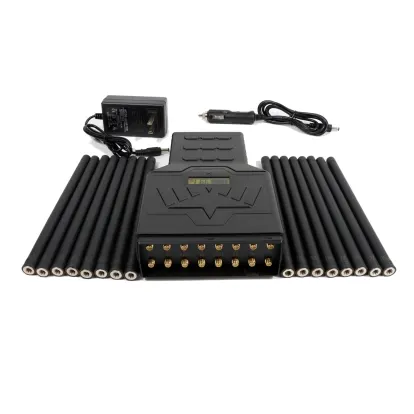A WiFi and bluetooth jammer Can Prevent Data Theft
It is important to understand that WiFi is available in 2 frequencies, 2.4GHz and 5GHz. While 2.4GHz is by far the most commonly used, some newer routers do include 5GHz.
Bluetooth is within the 2.4GHz band, so any WiFi jammer that covers 2.4GHz is also going to block Bluetooth.
The next important consideration is the size of the coverage area needed for your application. We offer units such as which covers both 2.4GHz and 5GHz to approximately 15 meters, the popular spy camera jammer which covers 2.4GHz WiFi only to approximately 20 meters, or the extremely powerful which covers both, up to 250 meters.
There are some variations in the coverage area depending upon local signal strength, physical environment, etc. Where the signal is weaker, the coverage is greater, and vice versa.
How Far Should WiFi Reach?
Several factors, including the frequency range, signal strength, and the presence of walls or obstacles, can cause variations in the range of the WiFi signal.
With the 2.4 GHz frequency band, your jamming device will experience enhanced coverage, although the speed may be lower. On the other hand, the 5 GHz frequency band delivers higher speeds but has a shorter range, allowing for optimal network performance.
In most cases, a regular WiFi router can cover a distance of approximately 100 feet indoors and up to 300 feet outdoors in open areas. Nonetheless, the range can be considerably diminished due to interference caused by other devices or materials.
Signal Disturbances and Interference
By utilizing a frequency range (2.4GHz or 5GHz) that travels through the air, the WiFi signal establishes a connection between your devices and the internet. It is advisable to select newer equipment that supports the 5 GHz frequency band as signals in this band have a shorter range, minimizing the chances of interference from neighboring networks compared to older equipment operating on the 2.4 GHz band.
Metal
Among all materials, metal has the greatest potential to weaken your WiFi signal. Being an excellent conductor of electricity, it has the capability to reflect WiFi signals, causing buffering issues during streaming or videoconferencing, lagging in gaming, and frustratingly slow loading times.
Walls (Concrete & Brick)
WiFi signals can be obstructed by walls, but the degree of interference is influenced by factors like the type and thickness of the wall material.
The penetration of WiFi signals can be hindered by concrete and brick walls, with concrete walls proving to be more challenging due to their higher density and thicker mass. Consequently, concrete walls are more effective at blocking WiFi signals than brick walls.
Windows, Glass & Mirrors
It’s generally not recommended to place your router next to a window or a mirror, either. WiFi signals can’t pass through windows, glass, and mirrors because these materials contain a thin layer of metal that reflects the radio waves back instead of allowing them to pass through.



 留言列表
留言列表


